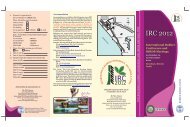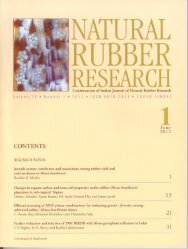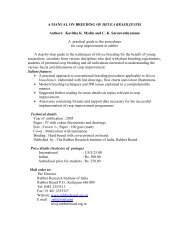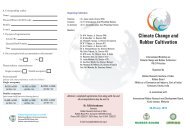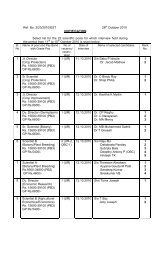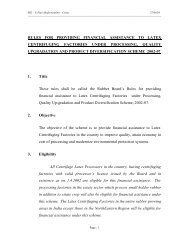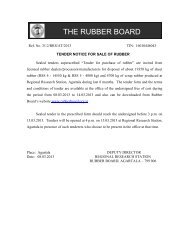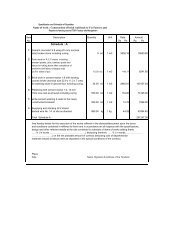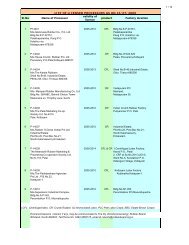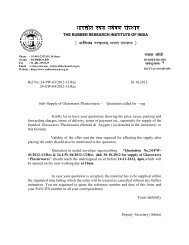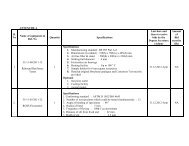to read the publication - Rubber Board
to read the publication - Rubber Board
to read the publication - Rubber Board
Create successful ePaper yourself
Turn your PDF publications into a flip-book with our unique Google optimized e-Paper software.
In this issue<br />
Natural <strong>Rubber</strong> Research is coming out for <strong>the</strong> first time with a special issue<br />
and <strong>the</strong> <strong>the</strong>me is Climate Change which is of <strong>to</strong>pical relevance. The articles<br />
appearing in this special issue are important on two accounts: (i) According <strong>to</strong><br />
<strong>the</strong> fourth assessment report of <strong>the</strong> Intergovernmental Panel on Climate Change,<br />
countries in South and South East Asia where most of <strong>the</strong> world’s natural rubber<br />
(NR) is traditionally grown are highly vulnerable <strong>to</strong> <strong>the</strong> adverse effects of global<br />
warming and climate change. (ii) Due <strong>to</strong> <strong>the</strong> increasing global demand for NR,<br />
its cultivation is being extended <strong>to</strong> hi<strong>the</strong>r<strong>to</strong> non-traditional areas that are often<br />
agro-climatically less congenial for its optimum growth and productivity. Thus,<br />
NR cultivation will increasingly experience climate stress, both in <strong>the</strong> traditional<br />
and non-traditional areas in <strong>the</strong> years ahead.<br />
Several articles in this issue give evidence for climate warming in both <strong>the</strong><br />
traditional and non-traditional areas of NR cultivation in India. The article by<br />
Sa<strong>the</strong>esh and Jacob (page 1) shows how this will have a profound adverse impact<br />
on NR productivity. In parts of North East India where severe cold during<br />
winter is presently a limiting fac<strong>to</strong>r for NR cultivation, climate warming has a<br />
stimula<strong>to</strong>ry effect on NR productivity. Moderate warming could make more<br />
areas in North East India suitable for growing NR in future.<br />
The article by Jayashree et al. (page 18) explains <strong>the</strong> successful development<br />
of a transgenic rubber plant that over-expresses MnSOD, imparting protection<br />
against water deficit stress in nursery studies. This is <strong>the</strong> first such report in<br />
natural rubber. Several articles in this issue discuss agronomic practices for<br />
managing adverse climatic conditions in <strong>the</strong> field. These independent studies<br />
suggest that clone RRII 430 may have an edge over <strong>the</strong> o<strong>the</strong>r clones in <strong>the</strong> RRII<br />
400 series in terms of survival under hot and dry conditions. The paper by Nair<br />
et al. (page 69) explains a fast and efficient method for screening large number<br />
of plants for intrinsic stress <strong>to</strong>lerance traits.<br />
Carbon dioxide sequestration and water flux rates of a young NR plantation<br />
estimated by <strong>the</strong> eddy covariance technique is reported by Annamalainathan<br />
et al. (page 28). This is <strong>the</strong> first such report from a perennial crop grown in<br />
India. The article by Meti et al. (page 38) used satellite images for <strong>the</strong> first time<br />
<strong>to</strong> estimate <strong>the</strong> vulnerability of rubber soils <strong>to</strong> erosion. Extreme rainfall events<br />
are a likely fallout of climate change and rubber plantations which are generally<br />
grown in slopes need <strong>to</strong> take special care against soil erosion.<br />
James Jacob MSc (Ag), PhD, DIC, PhD<br />
Edi<strong>to</strong>r-in-Chief




